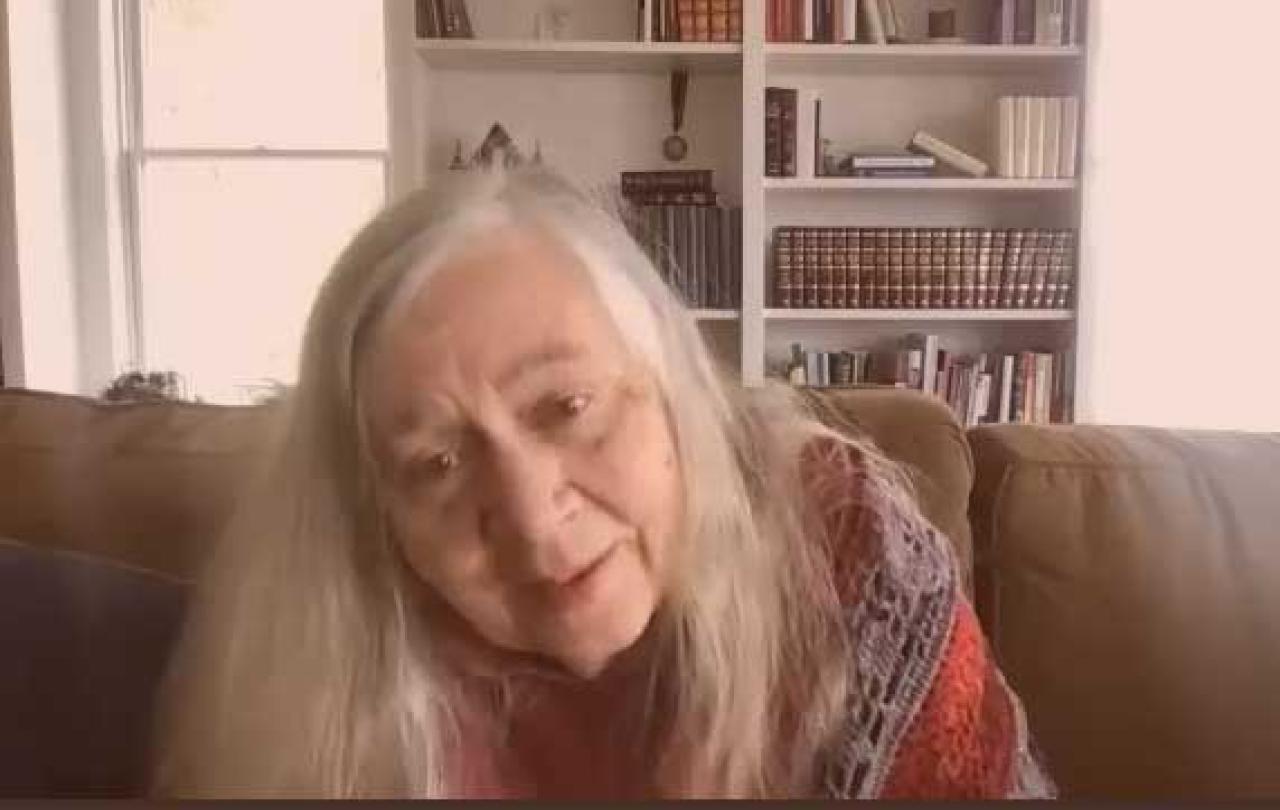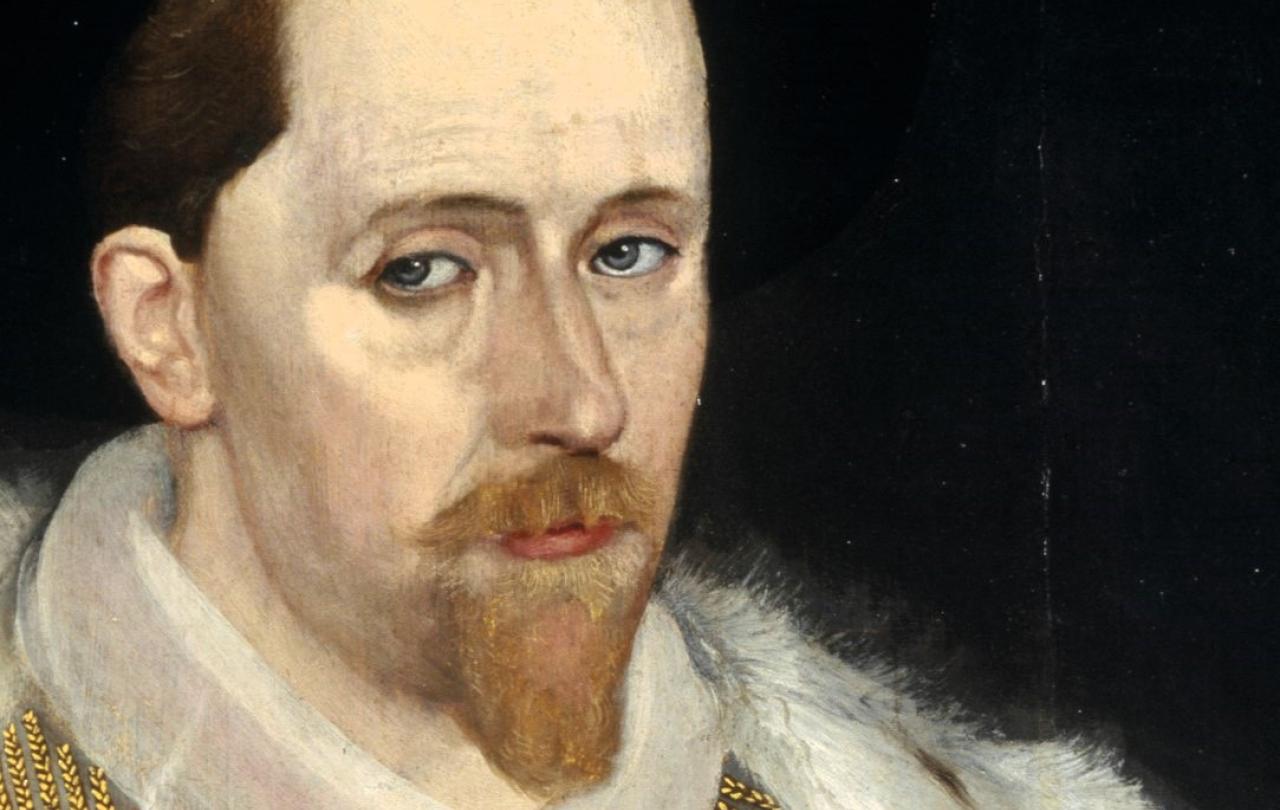
Listen now
Watch now
Professor Marilynne Robinson was a guest that I felt utterly underqualified to interview. And with Barack Obama among her list of previous interviewers, I don’t think such a feeling was unjustified. But, nevertheless, there I was - talking to a Pulitzer Prize winning force of nature - all the while, hoping she could neither sense my terror, nor hear my neighbours rowing through the thin walls of my tiny, terraced house.
It was a surreal moment, to say the least.
Marilynne Robinson, if you are not yet acquainted, is the author of best-selling novels such as Housekeeping, Gilead, Home, and Lila and Jack. Each one a masterpiece. She has also written plenty of non-fiction, continuing to be generous with her genius.
Just before we began recording our episode over Zoom, my co-host, Justin, asked Marilynne whether she was able to somehow block the light streaming in from the windows behind her (needless to say he is the practical maestro behind Re-Enchanting), to which Marilynne simply replied: ‘many windows, no curtains.’ Oh gosh, I thought. This lady oozes philosophy.
How would I ever keep up?
I was always three steps behind Marilynne; partly because I imagine most people are, but mostly because it is a truly enchanting place to find oneself.
Well, if I’m being honest, I didn’t. When the conversation turned to the quantum realm, I was indescribably glad that Justin was there. My mind was still pondering the possible analogous depths of curtain-less windows. But I have since decided that I’m not ashamed to admit that I was always three steps behind Marilynne; partly because I imagine most people are, but mostly because it is a truly enchanting place to find oneself.
To trail behind someone so thoughtful means that while they may be onto their next thought or point of conversation, you are able to savour what has already been said, free to pick up and ponder the magnificent breadcrumbs that they have left in their wake. And when it comes to Marilynne Robinson, there are an awful lot of breadcrumbs. If you have ever read a line of a book that has struck you to the point of not being able to read on, even if only for a moment, then you are familiar with the sensation to which I am referring.
When you come to listen to the episode of Re-Enchanting, I do hope that you’ll hit the pause button as often as you need to in order to truly soak Marilynne in. I only wish that my real-time conversation with her had that on offer.
Nevertheless, here is what the view looks like from three steps behind Marilynne Robinson: it resembles a mysterious and wholistic fascination with, and (if I may be so romantic) a love for humanity. That is, both my own humanity and humanity in general. Mind, body, and soul (terms which, in themselves, are full of mystery and nuance) – the whole thing.
Marilynne defines herself as a Christian Humanist. What may sound like somewhat of an oxymoron at first, begins to make profound sense when humanism is stripped of its (rather recent) atheist connotations. Afterall, the intrinsic value every person holds just because they are a person is a profoundly spiritual and biblical concept. As Tom Holland suggests, humanism, whether one likes it or not, is rooted in, and therefore utterly dependent upon, Christian perceptions of reality. When engaging with Marilynne, whether that be through conversation or through her work, it becomes clear that her Christianity enchants her view of humanity, which in turn, has re-enchanted my own.
It is evident in the care and complexity with which she creates her characters, giving notable time and space to the intricate inner-workings of their consciousness, amplifying their inner-monologue, and focusing attention on their interior rejuvenations, how their sense of self responds to their shifting exterior contexts. It is just as obvious when you are privileged enough to observe her gently marvel over the beautiful capacities of the human mind, the innate mysteries of the human soul; the endless nuances of all that is seen and unseen when it comes to the human-being.
Goodness seems to be Marilynne’s preferred start-line. Undergirding any humanism that she may adhere to is the notion that human beings were designed and created...
It should be noted that such an admiration is not born out of an avoidance of the brokenness that human-beings are so prone to displaying. Indeed, this world does not offer any of us such a luxury. The evidence of the imperfection of humanity is easier to find than the evidence of any innate goodness. And yet, that goodness seems to be Marilynne’s preferred start-line. Undergirding any humanism that she may adhere to is the notion that human beings were designed and created, that there is an intimate creator / creation dynamic at play in the cosmos; one that is ultimately fuelled by the care of the creator for the created. There is, to borrow a phrase, a ‘givenness’ to all things.
If we, like Marilynne, choose to use the givenness of things as a lens through which we perceive reality, there is utter delight to be found.
It is an admittedly cosmic-sized enchantment, but the implications of it trickle all the way down to the detail of the every-day, the ordinary, the (so-called) mundane. If we, like Marilynne, choose to use the givenness of things as a lens through which we perceive reality, there is utter delight to be found in our streams of thought, in our capacity to collaborate with what is beyond our control. There is a deep enchantment to be found in our very existence, our presence in both space and time.
As a disclaimer, I feel that I must admit to merely scratching the surface of the conversation that we had with Marilynne Robinson here, to read this piece and not listen to her episode (or read her work, for that matter) is to settle for a minute fraction of her thoughts. Trust me when I say - you want the whole thing.
Here I am, three days on and still admittedly three steps behind Marilynne as I mentally re-trace the trajectory of our conversation. But that is quite alright with me, I’m still enjoying picking up each of the breadcrumbs that she left along the way.





